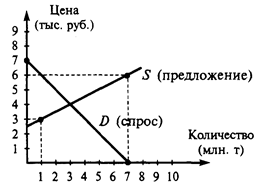KEY WORDS
method; approach; target language; four skills; activities; competence; usage; use; characteristics; eclectic approach
· An Introduction to a Chapter Many teachers of English as a foreign language now share the belief that a single right way does not exist. It is certainly true that no comparative study has consistently demonstrated the superiority of one method over another for all teachers, all students and all settings. Presented in this chapter is a description of language teaching methods in practice today: the Grammar-Translation Method, the Direct Method, the Audio-Lingual Method, the Silent Way, Suggestopedia, Community Language Learning, the Total Physical Response Method, and the Communicative Approach. Of course, what is described here is only an abstraction. How a method is manifest in the classroom will depend heavily on the individual teacher’s interpretation of its principles. Some teachers prefer to practice one of the methods to the exclusion of the others. Other teachers prefer to pick and choose in a principled way among the methodological options that exist, creating their own unique blend. · Grammar-Translation Method In the 18th and 19th centuries Latin and Greek were taught by means of what has been called Classical Method. In the 19th century the Classical Method came to be known as the Grammar-Translation Method. The Grammar-Translation Method focuses on developing students’ appreciation of the target language’s literature as well as teaching the language. Students are presented with target-language reading passages and answer questions that follow. Other activities include translating literary passages from one language into the other, memorizing grammar rules, and memorizing native-language equivalents of target language vocabulary. Class work is highly structured, with the teacher controlling all activities. Memorization is the main learning strategy and students spend their class time talking about the language instead of talking the language. Little thought was given at the time to teaching someone how to speak the language. · Guine and the Series Method As we begin our look now at the history of “modern” foreign language teaching, we look in on Francois, Guine, a French teacher of Latin whose insights and writings were truly remarkable. In his mid-life he decided to learn German and went to Hamburg for one year. Upon arrival in Hamburg he started to learn German grammar book and a table of the 248 irregular verbs! He did this in a matter of only 10 days and hurried to the university to test his knowledge. “But alas!” he wrote, “I could not understand a single word!” But he was undaunted. He returned to the isolation of his room, to memorize the German roots and to re-memorize the grammar book and irregular verbs. “But alas!” The result was the same as before. In the course of the year in Germany, Guine memorized books, translated Goethe and Shiller, and even memorized 30000 words in a German dictionary. At the end of the year Guine went home, a failure. But there is a happy ending. Upon returning home Guine discovered that his 3-year-old nephew had, during that year, learned to speak. His nephew was a chatterbox of French! How was it that this little child successded so easily? The child must hold the secret to learning a language! So, Guine spent a great deal of time observing his nephew and other children. He came to the following conclusions: language is a means of thinking, of representing the world to oneself. So, Guine set about devising a teaching method. It was a method that taught learners directly (without translation) a series of connected sentences that are easy to perform. Guine was very successful with his method.
|




